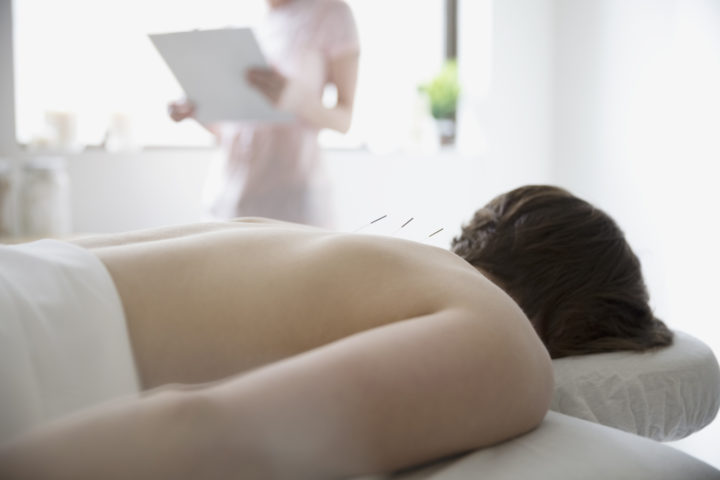Sex education nerds and history nerds, gather ’round!
Or, if you’re like me, you fall into both of those categories. In any case, let’s learn together about something you probably didn’t cover in History or Sex Ed class: the modern history of the vibrator! (Spoiler: sexism ahead.)
Once upon a time, women—particularly upper- and middle-class women—were frequently diagnosed with a nervous condition called “hysteria” (derived from the Greek word for uterus). Today, critics of both the old diagnosis and the still-persistent sexist stereotypes associated with it assert that it is basically a term for being too female for the comfort of men. The list of symptoms was certainly broad enough—including faintness, insomnia, shortness of breath, nervousness, feelings of heaviness in the abdomen, vaginal wetness, loss of appetite, low sex drive, high sex drive—that it is reasonable to understand the hysteria diagnosis as a thinly-veiled method of policing women’s sexuality, dismissing female voices, reducing women’s potential credibility in public or professional spheres, and generally keeping women under control.
I warned you it would be sexist.
Essentially, 19th- and 20th-century physicians believed that the stresses of modern life put women at a higher risk of nervous disorders and of developing faulty reproductive tracts. And middle- and upper-class female life in the West in the nineteenth and twentieth century was proscribed enough that anxiety and depression, as well as plain old discontentedness and extreme sexual frustration, were certainly common. But if we do put ourselves into the shoes of sexist nineteenth-century doctors (a fun exercise, I know), what makes sense as the treatment for hysteria?
Why, vulvar massage, of course.
That’s right: doctors would bring women in and massage their vulvas until they experienced an “hysterical paroxysm,” or orgasm. Because they accomplished this using only external stimulation, this was not typically considered a sexual act; sex meant vaginal penetration, and thanks to Freud, “mature” female pleasure was understood to be exclusively vaginal. (It is worth noting also that hysteria, and vulvar massage as a treatment for it, actually date back to the time of Hippocrates.) Essentially, most doctors were unable to recognize what was in front of their eyes: external stimulation is pleasurable and causes amazing, relieving orgasms that can be extremely therapeutic.
Partly because hysteria diagnoses were so common and required regular treatment, doctors began to complain of tired wrists and hands. In the 1860s, the American physician George Taylor invented a steam-powered vibrator called the “Manipulator” for medical use on hysteria patients. Then, around 1880, the British Dr. Joseph Mortimer Granville patented the nearest ancestor to modern vibrators: an electromechanical, battery-powered vibrator that was not intended for use on female hysterical patients but became hugely popular for exactly that. (His story is the focus of the 2011 film Hysteria.)
It’s worth noting here that hysteria diagnoses were concentrated among white upper- or middle-class populations; the same symptoms in poor women and women of color may have drawn a more severe or sinister diagnosis, or rather than being pathologized may simply have been attributed to racial or class stereotypes. I bring this up to question for whom the vibrator, and sexual pleasure in general, has since been designed, marketed, and accepted. It is important to recognize not only the misogyny in the vibrator’s history, but also the classism and racism of the time that still resonate in the way sex and sexuality is understood today.
The early 1900s saw the first electric vibrators available for personal purchase and use at home. Fun fact: this development made the vibrator the fifth domestic appliance to be electrified (following electric sewing machines, fans, tea kettles, and toasters). Vibrators were marketed as home therapeutic devices, but soon began to appear in pornography and in the 1920s, seemingly as a result of this explicit recognition of their sexual potential, their commercial success petered out. Not until the sexual revolution of the 1960s did vibrators reappear as popular, well-advertised products—and this time, they could be openly recognized and celebrated as the sexy devices they are.
Today, vibrators come in all different shapes, sizes, colors, materials, and owners (not just women!). You can explore their legacy at some of the fantastic shops and education centers that house antique vibrator collections, including Good Vibrations in San Francisco, CA, Babeland in Seattle, WA, and The Center for Sexual Pleasure and Health in Pawtucket, RI.
The moral of the story? Get an amazing vibrator. And next time anyone uses the word “hysterical” to dismiss you, whip out your vibrator, stare that person in the face, and without saying a word, turn it on. The vibrator’s history may not be perfect, but it’s a great weapon to have in our arsenal now.




comments